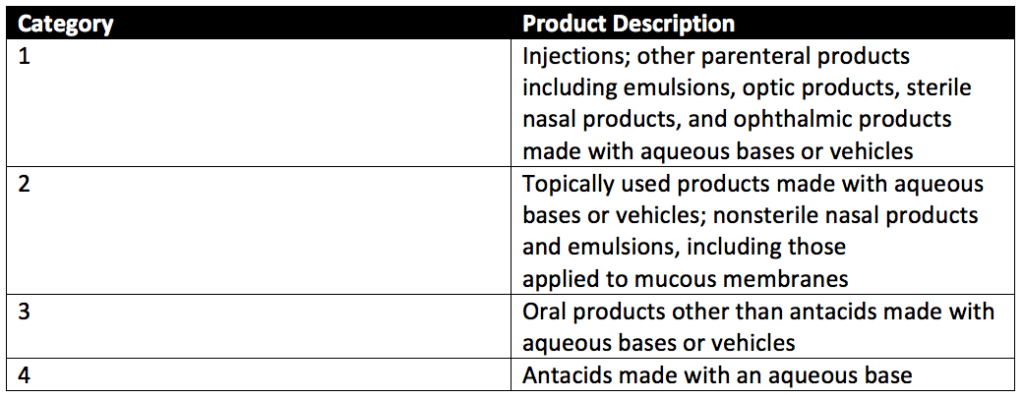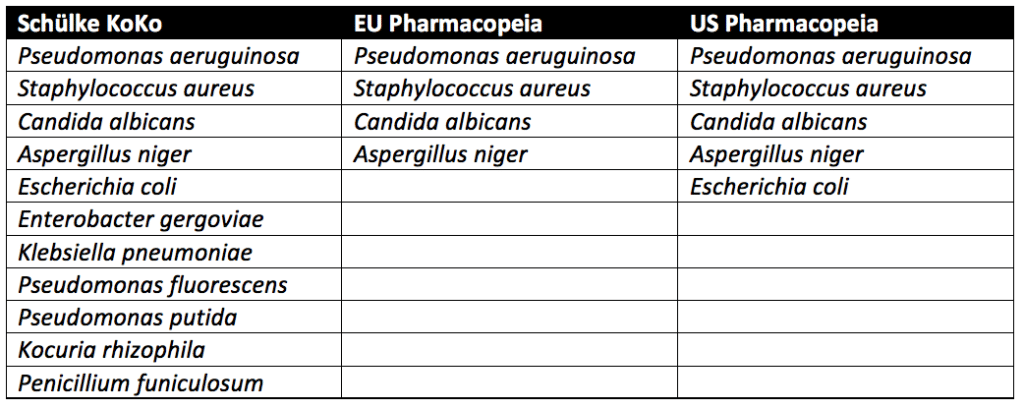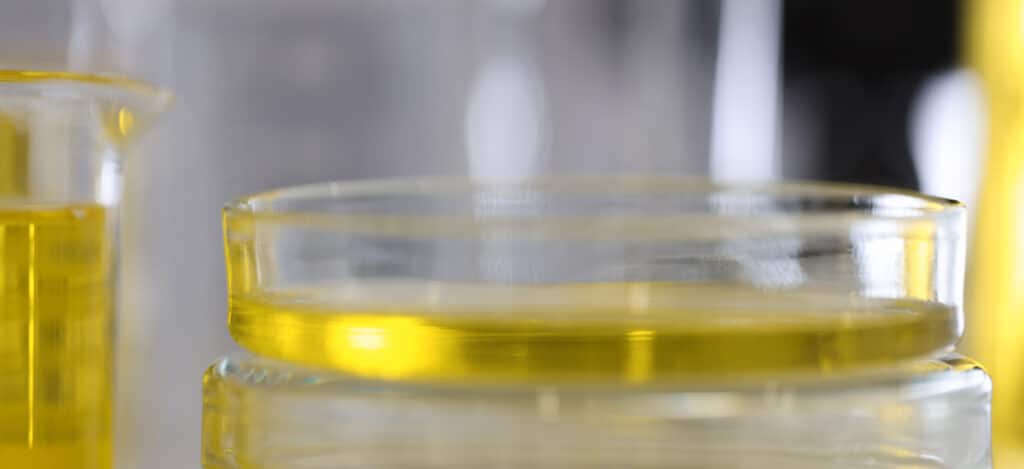Preservative Efficacy Testing Vs. Stability Testing
What are preservatives?
Preservatives are substances mixed into creams, gels, and other liquids. Preservatives are used to prevent the growth of bacteria, fungi, and other microorganisms within a medical, cosmetic, household, or food product. Preservatives also help keep the freshness of the appearance of a product and keep its consistency intact over time.
What is preservative efficacy testing (PET)?
Preservative efficacy testing, also known as preservative challenge testing, determines the effectiveness of a preservative during its shelf life and evaluates how well a product withstands microbial contamination during use.
What is stability?
Stability is a suspended state where there is no change (or small changes that are happening internally at a consistent rate such that the net change moment to moment is zero). In terms of FDA regulations, stability covers five FDA categories: chemical stability, physical stability, therapeutic stability, toxicological stability, and microbiological stability of a medical device or product. Chemical stability refers primarily to drug formulations and ensures that all molecules in a formulation remain in their therapeutic state and do not undergo additional chemical reactions over time. However, medical devices must also be protected from oxidative chemical reactions or other chemical reactions that could cause the degradation of product materials. Physical stability refers to biological therapeutics (maintaining the physical integrity of protein structures over time) and to the physical functional stability of medical devices or combination products. Therapeutic stability refers to the stability of a product or device’s therapeutic efficacy over time. Toxicological stability refers to the stability of the medical product, cosmetic, drug, or medical device’s toxicity levels over time. Finally, microbiological stability is the sterility of the product over time.
What is stability testing?
Stability covers acceptance criteria for chemical, physical, therapeutic, toxicological, and microbiological stability. Multiple factors, such as the compatibility of product additives, materials, active ingredients, and agents, impact stability. In order to prove various stability types over time, tests for physical, therapeutic, toxicological, and microbiological stability must be performed on packages that have been in storage (e.g., accelerated aging or real-time storage) until the desired expiry date.
What products need preservative efficacy testing?
Preservative efficacy testing can be used to determine the best preservative to use in your topical formulation and the minimum effective concentration needed to preserve the pharmaceutical, food, or biotechnology product being assessed. Topical formulations (gels, creams, ointments, and lotions) comprise a water or oil base that delivers various medications, natural substances (such as herbs), or moisture through the skin. Topical cosmetics contain preservatives to support the stability of the formulation and prevent microbial growth during repeated product use. Preservative challenge testing is also used for parenteral products containing multiple doses. In these products, antimicrobial preservatives inhibit the growth of any microorganisms introduced during repeated insertion and withdrawal to load individual amounts.
Preservative efficacy testing can evaluate four categories of products with preservative challenge testing. These product categories are detailed in Table 1 of USP 51, reproduced below.

What products need stability testing?
Stability studies are necessary to prove that products and medical devices are safe to use and perform their desired functions over time. Thus, all medical devices, cosmetics, and other medical products will require stability testing before receiving premarket approval.
How is preservative challenge testing performed?
Three approaches are used in preservative challenge testing. These approaches come from the Schülke KoKo Test, United States Pharmacopeia (USP), and the European Pharmacopeia.
Schülke KoKo Test vs. U.S. Pharmacopeia vs. European Pharmacopeia
Pseudomonas aeruginosa, Staphylococcus aureus, Aspergillus niger, and Candida albicans must be tested for in all cosmetic products sold in the European Union. In addition to the microbes above, testing with microbes known to lead to spoilage of cosmetic products is recommended but not required. In the United States, the USP guidelines require testing of Escherichia coli in addition to Pseudomonas aeruginosa, Staphylococcus aureus, Aspergillus niger, and Candida albicans. Spoilage microbes are not needed for PET. In contrast to the pharmacopeia tests, which only evaluate pathogenic microbes, the Schülke KoKo test evaluates product spoiling microorganisms. Schülke KoKo test’s spoiling microorganisms are based on decades of cosmetic testing experience from Schülke & Mayr in Germany.
USP preservative efficacy testing evaluates cosmetic products by exposing them to a single microbial strain at a time. Additional details on USP preservative challenge testing, which follows similar procedures to the European Pharmacopeia, can be found through reading our articles on Preservative Challenge Testing And USP 51 and Preservative Efficacy Testing For Medical Devices. In contrast, for the Schülke KoKo test, the single cultivated microbes are brought together into a mixed suspension to challenge the cosmetic product. A new mixed suspension is prepared for each of the six inoculation cycles for Schülke KoKo testing. Since the Schülke KoKo test uses a mixed microbe inoculation, it simulates microbial exposure of a product during production, filling, and use. Indeed, a product would likely be exposed to multiple microbes at once instead of one at a time. Overall, though different from the USP and European Pharmacopeia methods, the Schülke KoKo Test is a reliable test method for assessing the efficacy of antimicrobial preservation of cosmetic products.

First, cultures of Candida albicans (ATCC No. 10231), Aspergillus brasiliensis (ATCC No. 16404), Escherichia coli (ATCC No. 8739), Pseudomonas aeruginosa (ATCC No. 9027), and Staphylococcus aureus (ATCC No. 6538) are prepared. Stock cultures of these organisms are prepared by centrifuging an ATCC culture, removing residual media from the prior culture, and resuspending the microorganisms in a sterile suspension fluid. The suspension fluids for each microorganism referenced above are prepared at a microbial count of about 1 × 108 colony-forming units per milliliter (CFU/mL).
Preservative efficacy testing is performed in five sterile, capped containers. Suppose the product’s original container is sterile, can be entered aseptically, and holds an appropriate product volume. In that case, the original filled product containers may be used. Each of the five product samples is injected with a test suspension of either Candida albicans, Aspergillus brasiliensis, Escherichia coli, Pseudomonas aeruginosa, or Staphylococcus aureus. Each product sample is exposed to only a single microbe of the five listed, and all microbes are exposed to the product during testing. The microbial test suspension injected is between 0.5%- 1% of the volume of the product under assessment and is at a concentration of 1 × 105 and 1 × 106 CFU/ml of the product for category 1-3 products. The final concentration per ml of category 4 products is between 1 × 103 and 1 × 104 CFU/mL.
Each of the five product samples with their respective microbial injections is incubated at a simulated room temperature of 22.5 ± 2.5°C or 32.5 ± 2.5°C depending upon the microbe the product sample is exposed. Microbial counts are taken at 7, 14, and 28 days for most microorganisms tested. The plate-count method determines the number of CFU present in each inoculated product sample. This plate-count method is completed in duplicate. Once all counts are taken, the change in log10 of the concentration of CFU/ml is calculated for each microorganism. The requirements for antimicrobial effectiveness are met if no increase in microbial growth for the various organisms tested occurs within the timeframes specific to each organism. are met. No increase in microbial growth is defined as not more than 0.5 log10 units more than the previous microbial growth value.
How are stability tests performed?
Accelerated aging is a subset of stability testing and a great example of what stability testing looks like. Accelerated aging is a way to store packaged samples such that the samples experience the passage of time faster. Accelerating aging is not possible for all product-packaging systems. This is because the temperature for an aging study should be below the material transition temperature of a product’s packaging materials. If the material transition temperature of your packaging system is at 35°C or below, accelerated aging will not be a viable option. In this case, real-time stability studies are the only stability testing option. In most cases, accelerated aging will age samples two-fold. Thus, samples stored a year under accelerated aging conditions support a product expiry of two years, while samples stored a year under real-time stability studies only support product expiry of a year. For more information on accelerated aging, please visit our full article here.

What are the differences between preservative efficacy testing and stability testing?
Stability testing is used to prove that products and medical devices are safe to use and perform their desired functions over time. In contrast, preservative challenge testing determines the best preservative for use and the minimum effective concentration needed to preserve multidose parenteral products, topicals products, food, or other healthcare items that contain preservatives. Together preservative efficacy and stability tests ensure that parenteral products, cosmetic products, and medical devices meet the regulatory safety criteria for stability and antimicrobial activity.
Summary
Overall, preservative efficacy testing (PET) and stability testing are imperative for the regulatory approval of pharmaceuticals, cosmetics, and medical devices. These tests ensure that parenteral products, topicals, and medical devices are stable over time and have sufficient antimicrobial activity to keep patients safe during product use. All in all, ensure you choose a contract manufacturing organization that can support you with appropriate stability tests (e.g., accelerated aging) and preservative efficacy tests for your unique cosmetic, pharmaceutical, or medical device product needs.
MycoScience is a contract manufacturing organization specializing in sterile syringe and vial filling. MycoScience also offers Preservative Efficacy Testing, Cytotoxicity Testing, Bioburden Testing, Cleaning Validations, Microbial Aerosol Challenge Testing, Accelerated Aging, Microbiology Testing, EO Residual Testing, Bacterial Endotoxin Testing, Package Integrity Testing, Sterilization Validations & Environmental Monitoring services medical devices and allied industries. MycoScience is an ISO 13485 certified facility.
References
Michael J. Akers. Sterile Drug Products Formulation, Packaging, Manufacture, and Quality. Drugs and the Pharmaceutical Sciences. Informa Healthcare. 2010.
United States Pharmacopeial Convention. <51> Antimicrobial Effectiveness Testing. Rockville, MD, USA. 2021. (USPC <51>).
Sharing this in your social netwroks

